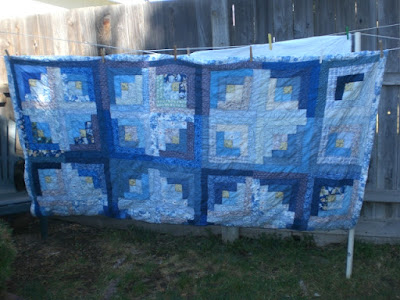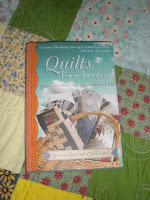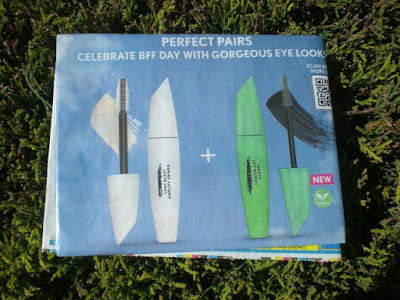
A few weeks ago, as I twisted and turned the pattern pieces to fit my barely-enough piece of fabric, I mused about the Biblical passages about “patterns.” God doesn't leave anything to whim or chance. One big example was the building of Israel's first worship center, the Tabernacle, which the Israelites put up, disassembled, carried, put up, disassembled, carried...for nearly four decades in a desert. Finally, it found a resting place in the Promised Land. When they were building it, God warned Moses: “See to it that you make everything according to the pattern shown you on the mountain” (Exodus 25:40, quoted in Hebrews 8:5). Somehow, God communicated the whole building plan. It would be fresh, holy, and not at all like the pagan worship centers they'd seen in Egypt.
Just as God had specific ideas for His worship centers, He has specific instructions for human behavior. We're to be different—God-chosen people. The apostle Paul expressed it this way” “Do not conform to the pattern of this world, but be transformed by the renewing of your mind. Then you will be able to test and approve what God's will it—his good, pleasing and perfect will” (Romans 12:2).
Sometimes, I roll my eyes and ask, “What next?” as our culture sinks deeper into normalizing sinful, immoral, and selfish behavior. “Everybody's doing it” becomes the reason to do it, even when God drew the line for morality and propriety that should characterize His followers.
Sadly, it's nothing new. I have a sticky-note marker in several “behavior” passages of my Bible so I can review what God's standards are—and are not. Especially in his letter to the Ephesian church, Paul had to pull believers away from the common behaviors of their sin-soaked culture. In chapters 4 and 5 he dealt with:
*Mouth sins (lies, anger, unwholesome talk, slander, obscenity, foolish talk, coarse joking)
*Selfishness sins (greed, stealing, not doing honest work so they could share with the truly needy)
*Relational sins (bitterness, rage, anger, brawling, every form of malice)
*Moral sins (sexual immorality, every kind of impurity).
His conclusion was emphatic: “God's wrath comes on those who are disobedient. Therefore do not be partners with them” (Ephesians 5:7). In other words, don't let the world lay its pattern of sin and rebellion on the fresh cloth of God's love and righteousness.
How is that accomplished? One way, by letting our minds get saturated with scripture so we're attuned to “God's pattern.” Other ways: heeding the counsel and example of mature Christians. Paul expressed it this way in a letter to his protege Timothy—the old apostle's last written communication that we still have: “What you heard from me, keep as the pattern of sound teaching, with faith and love in Christ Jesus” (2 Timothy 1:13).
My current grandchild “pajama” projects feature designs with cats, penguins, and a Disney princess. Oh, the interests of these little kids who will outlive me, and impact their culture. I pray for them—that their moral and spiritual “pattern” will come out of the scriptures, and that they grow up to display their love of God through upright and caring behavior to those around them. In other words, “cut” right!





